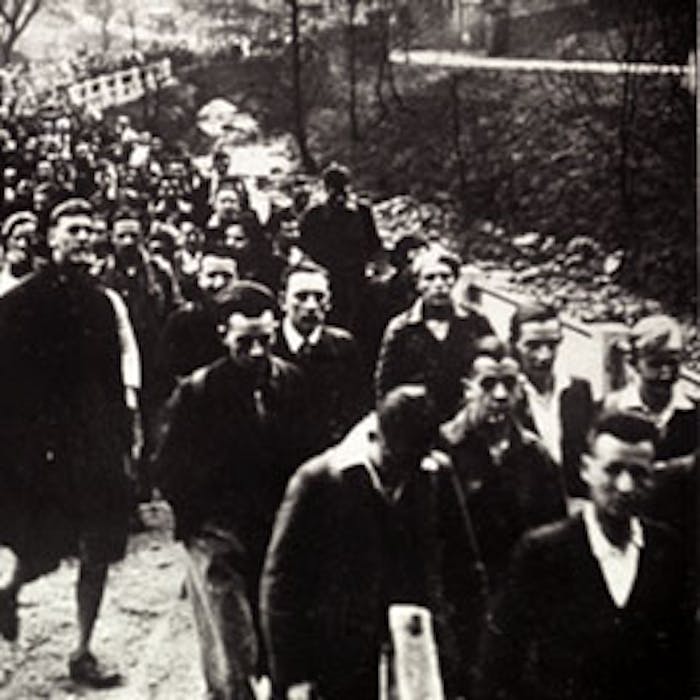
The Kinder Mass Trespass and the right to roam
It may seem surprising today, but it took over a century of campaigning to establish what became known as the 'right to roam', which gave ordinary people the chance to enjoy walks in the countryside on what would previously have been regarded as private land, to which access was denied. A key moment in this struggle was what became known as the Kinder Mass Trespass in Derbyshire in 1932.
On 24th April, 1932, hundreds of men and women defied the law to walk over hills and moorland to the plateau of Kinder Scout, Derbyshire, in what was later to become the Peak District National Park.
The protest was led by 20-year-old Benny Rothman, Lancashire secretary of the British Workers’ Sports Federation (BWSF), which organised walks and cycling trips for young workers from Manchester and surrounding mill towns. It followed a confrontation with gamekeepers, three weeks earlier, when ramblers attempting to reach another peak, Bleaklow, were turned back.
The plan for the Mass Trespass was for ramblers from Manchester to meet up with groups from other places - including Sheffield - at the Kinder plateau. Estimates vary of the numbers who took part - but it was only a few hundred at most. The BWSF had called for a rally in the village of Hayfield - but this was a diversion to distract the Derbyshire police force.
At William Clough, trespassers were confronted by gamekeepers and scuffles broke out. They broke through, running across prohibited land to Kinder plateau and meeting up with the ramblers from Sheffield from the other side.
The arrest of six young men – and subsequent imprisonment of five – unleashed a wave of sympathy for the ramblers and fuelled the ‘right to roam’-movement - the culmination of over more than a century's campaigning for all people to have access to the countryside. Early 19th-century romantic poets such as Byron, Coleridge and Wordsworth had written about the inspirational beauty of the ‘untamed’ countryside, and encouraged others to explore it.
With a growing appreciation after the First World War of the health benefits of exercise in the countryside, conflicts inevitably emerged between these visitors and landowners. In 1931 a government inquiry recommended the creation of a ‘national park authority’ to select areas for designation as national parks, but no action was taken.
After the 1932 Kinder Mass Trespass, and the harsh punishment of leader Benny Rothman and his associates, there were further efforts to push the government to action through a number of groups, including the Ramblers Association, the Youth Hostels Association, and the Councils for the Preservation for Rural England, and Rural Wales.
After the Second World War, the pressure culminated in a White Paper on National Parks, and in 1949 the National Parks and Access to the Countryside Act was passed, paving the way for their creation - the first of which was established in the Peak District on 17th April 1951. See separate entry.
Further reading
Links to external websites are not maintained by Bite Sized Britain. They are provided to give users access to additional information. Bite Sized Britain is not responsible for the content of these external websites.
